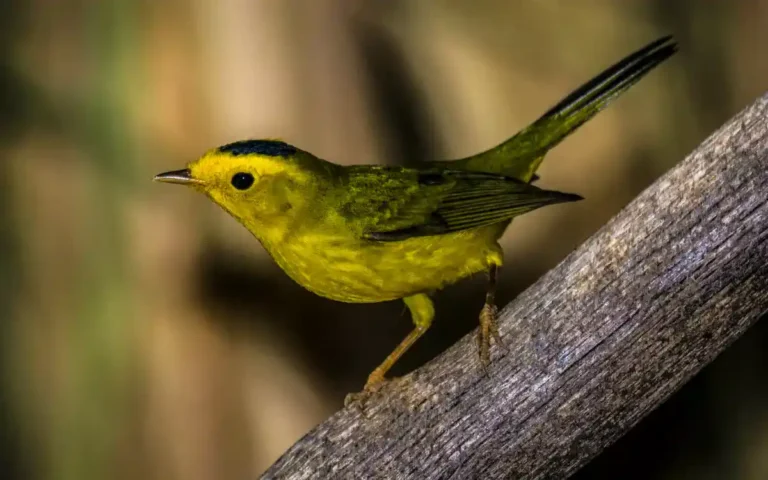18 California Birds of Prey

California has lots of great prey birds. we have listed all of these birds with all information some bird’s name is Eagles, vultures, hawks, and falcons.
California 18 Birds of Prey list :
Vultures in California
1.Turkey Vulture

Turkey Vultures use their keen sense of smell to find food and help clean the environment by eating dead animals. Despite their scary look, they’re harmless and important for nature.
- Habitats:
- Turkey Vultures are found all over California.
- They like open spaces like fields, deserts, and along coastlines.
- Identification Tips:
- Look for big birds with long wings making a “V” shape while flying.
- They have dark feathers and red heads without feathers.
- When soaring, their wings tilt slightly, making them easy to spot from below.
2.California Condor

The California Condor, once nearly extinct, is making a comeback. These birds, with their massive wings, can live up to 60 years and are revered in Native American culture.
- Habitats:
- Look in mountains and large canyons in California.
- They are often seen in national parks like Pinnacles, Big Sur, and parts of the Sierra Nevada.
- Identification Tips:
- Huge wingspan—as wide as a car!
- Black body with white under the wings.
- Watch for their bald heads, which can be pink, orange, or red.
3.Black Vulture

Black Vultures follow Turkey Vultures to food. They may lack a strong smell sense but make up for it with intelligence and strong family bonds. They’re also meticulous about cleanliness.
- Habitats:
- Black Vultures are quite rare in California.
- They might be spotted as visitors in southern parts of the state or in open landscapes like fields and woodlands.
- Identification Tips:
- Black Vultures have a distinctive look compared to other vultures.
- Body and wings are dark with shorter tails than Turkey Vultures.
- They have grayish-black heads without feathers, unlike the red head of a Turkey Vulture.
- Unique to Black Vultures are the white patches at the tips of their wings, visible during flight.
Eagles in California:
4.Bald Eagle
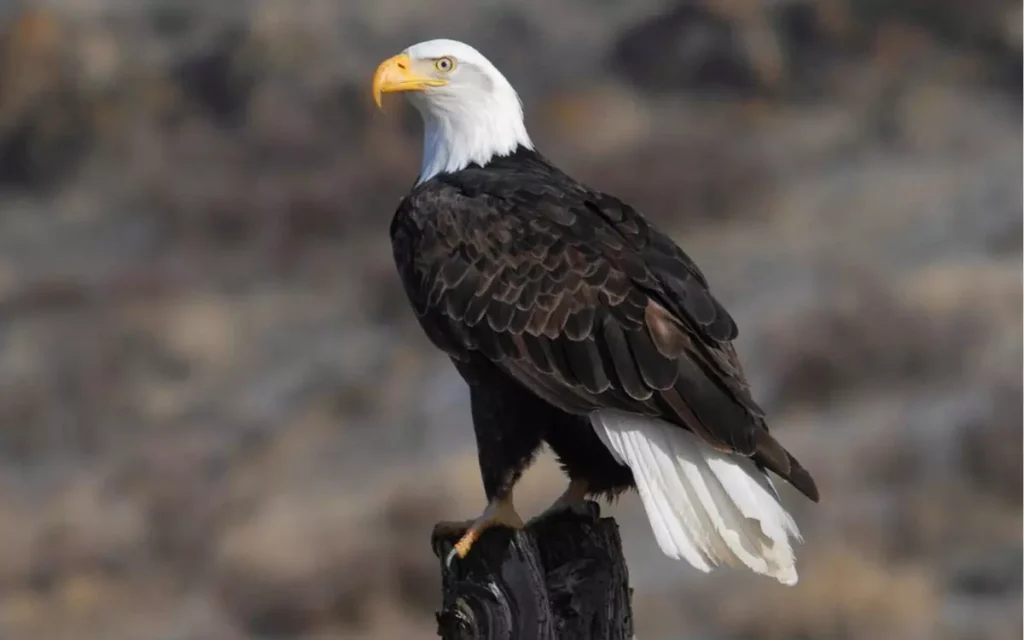
The Bald Eagle is the symbol of the United States, known for its strength and freedom. These eagles have made a big comeback and are now easier to find in the wild.
- Habitats:
- Look around lakes, rivers, and big water areas in California. They like places where they can catch fish easily.
- During the colder months, you can see them near the coast and around big lakes in the northern part of the state.
- They build their homes, called nests, in tall trees or on cliffs near water but away from people.
Identification Tips:
- Adults have a white head and tail with a dark brown body.
- Young eagles are more mixed brown and white and get their adult colors after about 5 years.
- They have a big yellow beak. If you hear a sharp, loud cry, it might be a Bald Eagle.
- When they fly, their huge wings are spread out straight.
Related article:
5.Golden Eagle
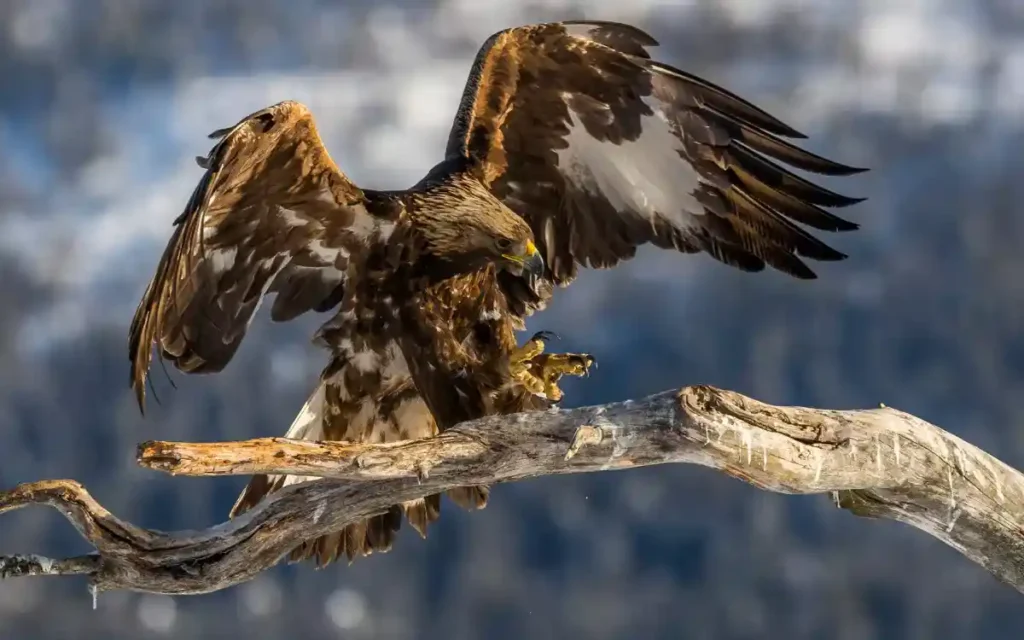
The Golden Eagle is one of the biggest and most skilled birds of prey. It lives in open spaces and is admired for its beauty and hunting skills.
- Habitats:
- They love open lands like grasslands, deserts, and places with lots of small bushes, where they can easily see their prey from up high.
- You can also find them in mountains and hilly areas, especially in the southern and eastern parts of California.
- Golden Eagles make their nests on high cliffs or tall trees, away from where a lot of people live.
Identification Tips:
- They are big birds with a dark brown body and light golden feathers on their head and neck.
- Young eagles have white spots on their tail and wings.
- When they fly, their long wings make a slight “V” shape, and they have a longer tail compared to Bald Eagles.
- They usually fly alone and don’t make much noise, quietly looking for food.
Hawks in California:
6.Red-Tailed Hawk

The Red-Tailed Hawk is one of the most common hawks in North America, and you can see them almost everywhere in California. They are known for their powerful presence in the sky and their distinctive red tail that shines when the sun hits it just right.
Habitats:
- Everywhere in California, especially open fields, deserts, roadsides, and parks.
- Often seen soaring in the sky or perched on telephone poles and trees.
Identification Tips:
- Big hawk with a broad, rounded tail and a bright red tail in adults.
- Loud screech, similar to what you hear in movies.
- Look for their brown body on top and pale below with a streaked belly.
7.Cooper’s Hawk

The Cooper’s Hawk is a master of agility, navigating through trees with incredible speed to catch its prey. These hawks have adapted well to human environments, making them a common sight in both cities and the countryside.
Habitats:
- Found in forested areas and urban gardens across California.
- Likes places with trees and shrubs for nesting and hunting.
Identification Tips:
- Medium-sized hawk with short, rounded wings and a long tail.
- Blue-gray back and orange-barred chest and belly.
- Fast and agile in flight, often chasing birds through trees.
8.Sharp-Shinned Hawk
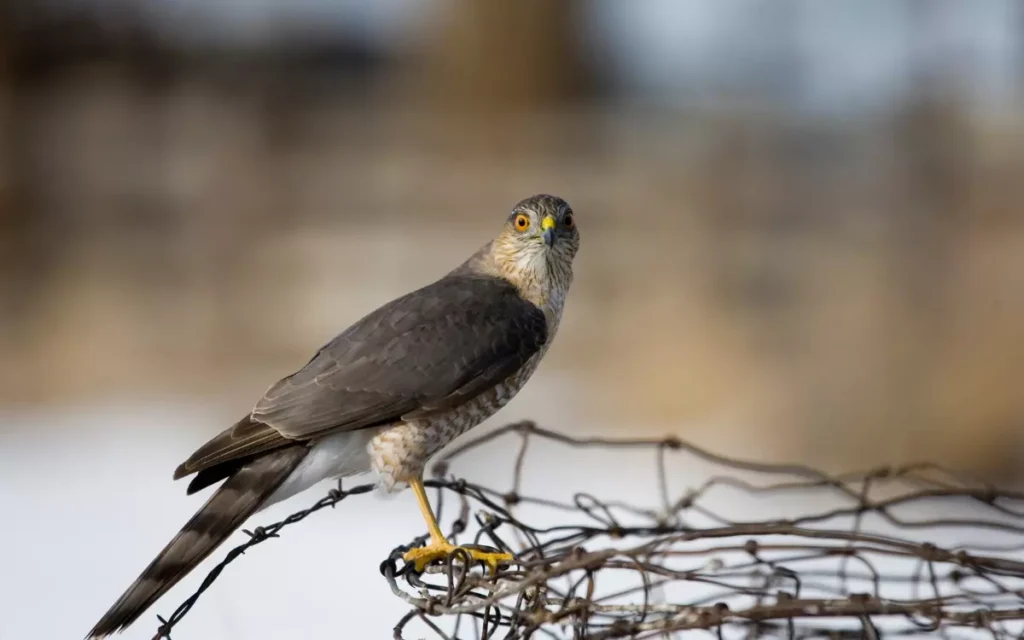
The Sharp-Shinned Hawk is the smallest hawk in North America. Despite its size, it’s a fierce predator, darting through trees with ease to catch small birds. Their presence is a surprise to many, especially during their migration periods.
Habitats:
- Lives in dense forests, but during migration, can appear in urban parks and yards.
- Spotted across California, from mountainous regions to lowland areas.
Identification Tips:
- The smallest hawk in California with narrow wings and a square-tailed appearance.
- Blue-gray back and sharp, thin legs.
- Flies in a series of flaps followed by a glide, often low to the ground.
9.Red-Shouldered Hawk

The Red-Shouldered Hawk brings a splash of color to the forests and woods of California. With their distinctive call echoing through the trees, they are a beacon for bird watchers. These hawks thrive near water sources, adding to the biodiversity of their habitats.
Habitats:
- Prefers wooded forests near water sources like rivers and lakes.
- Common in both northern and southern parts of California, especially in riparian zones.
Identification Tips:
- Medium-sized hawk with richly colored brown and white checkered wings and a reddish chest.
- Notable for its loud, kee-ah call, which is often heard in the woods.
- Broad wings and a fan-shaped tail with distinctive bands.
Falcons in California:
10.Peregrine Falcon

The Peregrine Falcon is renowned for its incredible speed, making it one of the fastest birds in the world. This bird has adapted to a variety of habitats, including urban areas, where it can be seen nesting on tall buildings.
Habitats:
- Found across California, from urban skyscrapers to cliffs in coastal and mountainous regions.
- Wetlands, open ranges, and rivers are also common places to spot them.
Identification Tips:
- Medium-sized falcon with a blue-gray back, white underparts, and black bars.
- Notable for its fast, powerful flight and steep dives when hunting.
- Look for its distinctive black “moustache” that contrasts with its white face.
Related article: 26 Species of Sparrows in California You can see
11.American Kestrel

The American Kestrel, often called the sparrow hawk, is the smallest falcon in North America. Despite its size, it’s a skilled hunter, known for its ability to hover in mid-air while scanning the ground for prey.
Habitats:
- Prefers open fields, meadows, and desert areas, but can also be found in urban and suburban settings across California.
- Often seen perched on telephone wires or poles.
Identification Tips:
- Small-sized falcon with a colorful plumage—males have a blue-gray head and wings with rust-colored back and tail; females are more uniformly brown.
- Recognizable by its sharp, pointed wings and long tail when in flight.
- Watch for its unique hovering behavior above fields.
12.Prairie Falcon

The Prairie Falcon is a bird of the open country, preferring arid regions and prairies. It’s less commonly seen than the Peregrine Falcon but is notable for its impressive hunting skills and speed.
Habitats:
- Found in open landscapes like deserts, grasslands, and savannahs in California.
- Can also be seen in agricultural areas and rocky outcrops.
Identification Tips:
- Medium-sized falcon with pale brown upperparts and dark brown spots.
- Flies with powerful wing beats and is known for its high-speed chases.
- Its pointed wings and tail are key identifiers, along with a blackish “armpit” mark visible in flight.
13.Merlin
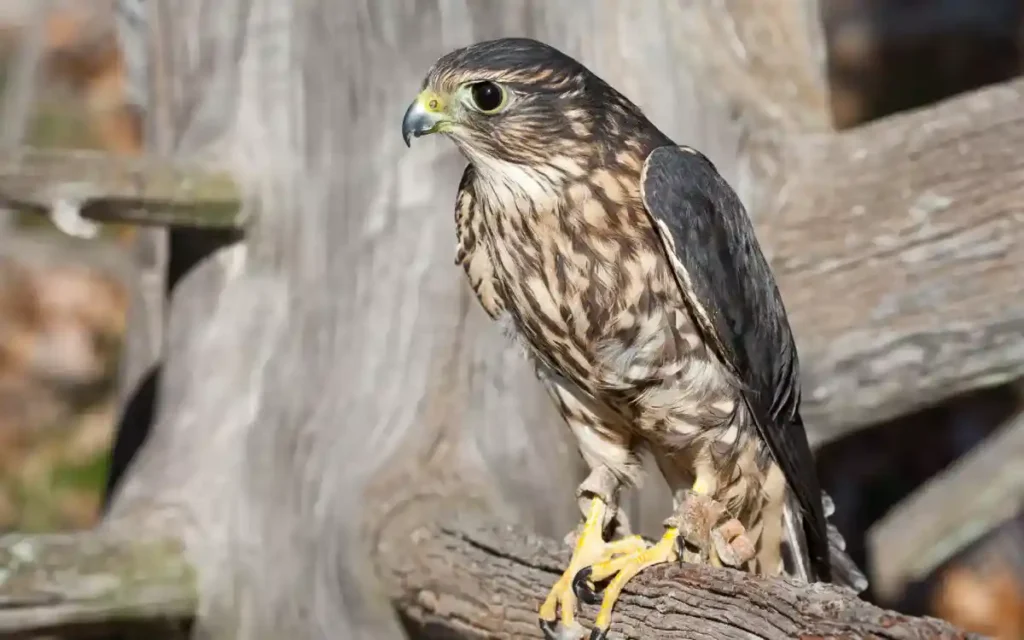
The Merlin is a small but fierce falcon, known for its bold hunting of birds mid-flight, even in urban areas. It’s a fast flyer and can be seen darting over fields and woods in pursuit of prey.
Habitats:
- During migration, can be found in a wide range of habitats across California, from coastal areas to urban parks.
- Breeds in northern forests but winters in open fields and marshes.
Identification Tips:
- Small, robust falcon with a broad chest, pointed wings, and a short tail.
- Dark blue-gray to slate-gray back with streaked underparts.
- Look for its aggressive flight pattern while chasing prey and its tendency to fly low over the ground.
Owls in California:
14.Great Horned Owl

The Great Horned Owl is among the most recognizable and widespread owls in North America, known for its imposing presence and deep hooting calls.
Habitats:
- Found in a variety of environments across California, including forests, deserts, urban parks, and wetlands.
- Adaptable, it can live anywhere with suitable nesting sites and ample food.
Identification Tips:
- Large owl with distinctive ear tufts that look like horns.
- Notable for its mottled gray-brown body, white throat, and yellow eyes.
- Its deep, resonating “who’s awake? me too” call is often heard at dusk and dawn.
15.Western Screech Owl

The Western Screech Owl is a small, camouflaged owl known for its distinctive trilling call. It’s more often heard than seen, blending into its surroundings.
Habitats:
- Prefers wooded areas, riparian forests, and canyons within California.
- They nest in tree cavities and can sometimes be spotted in urban parks and suburbs.
Identification Tips:
- Small owl with ear tufts and a rounded body.
- Features a patterned brown plumage that helps it blend into tree bark.
- Listen for its series of soft trills at night, differing from the hoots of larger owls.
16.Snowy Owl

Snowy Owls are rare visitors to California, primarily seen during irruption years when their populations in the Arctic fluctuate.
Habitats:
- When in California, they’re typically found in open fields, airports, and coastal dunes—areas resembling their tundra home.
- Sightings are uncommon but possible in the northern parts of the state.
Identification Tips:
- Large, white owl with varying amounts of black or brown spotting.
- Their bright yellow eyes and massive, rounded body are unmistakable.
- Silent in their southern range, they’re more likely to be observed silently perching or hunting.
17.Barred Owl

The Barred Owl, known for its distinctive “who cooks for you?” call, has been expanding its range into California, leading to interesting ecological dynamics.
Habitats:
- In California, they’re mostly found in dense forests and wooded swamps.
- Prefers habitats with a thick canopy of large trees and nearby water sources.
Identification Tips:
- Medium to large owl with no ear tufts and a rounded head.
- Recognizable by its brown and white striped plumage and dark eyes.
- Its call is a distinctive series of hoots that sound like “Who cooks for you? Who cooks for you-all?”
Know about – Over 200 species of Owl
Other California Birds of Prey:
Let’s talk about Ospreys, fascinating birds of prey that are especially interesting because they are found all over the world. In California, Ospreys are known for their incredible fishing skills and unique appearance.
18.Osprey

Ospreys are really cool birds that love being near water because they eat fish. They have some special features that make them easy to spot and identify.
Habitats:
- Ospreys like to hang out around lakes, rivers, and coastlines in California. Basically, anywhere there’s water and fish, you might see an Osprey.
- They are pretty common in both Northern and Southern California, especially during the spring and summer when they come back to their nests to raise their chicks.
- You can also see them on top of man-made structures like telephone poles or special platforms people have built for them to nest on.
Identification Tips:
- Ospreys are medium-sized birds with white underparts and dark brown upper parts.
- They have a white head with a distinctive dark stripe across their eyes, which makes them look a bit like they’re wearing a mask.
- One of the coolest things about Ospreys is how they fly. They have long, narrow wings with a bend, making them look like an “M” when they’re flying in the sky.
- When they’re hunting, you can see them flying over water, then diving down feet-first to grab fish with their sharp talons.
FAQS:
Q: What is the largest bird of prey in California?
Ans: The Golden Eagle is the largest bird of prey in California.
Q: What birds of prey are legal in California?
Ans: Falconry is legal in California, allowing licensed falconers to keep birds of prey like falcons, hawks, and eagles for hunting.
Q: What bird is California known for?
Ans: California is known for the California Quail, which is also the state bird.
Q: Can you see Bald Eagles in California?
Ans: Yes, Bald Eagles can be seen in California, especially near lakes, rivers, and coastal areas.
Q: What is the smallest bird of prey in California?
Ans: The American Kestrel is the smallest bird of prey in California.
Q: Are there any endangered birds of prey in California?
Ans:Yes, the California Condor is an example of an endangered bird of prey in California.
Conclusion:
California has cool birds of prey like eagles and hawks. We need to protect where they live so they stay safe. Watching birds the right way helps keep them safe.




